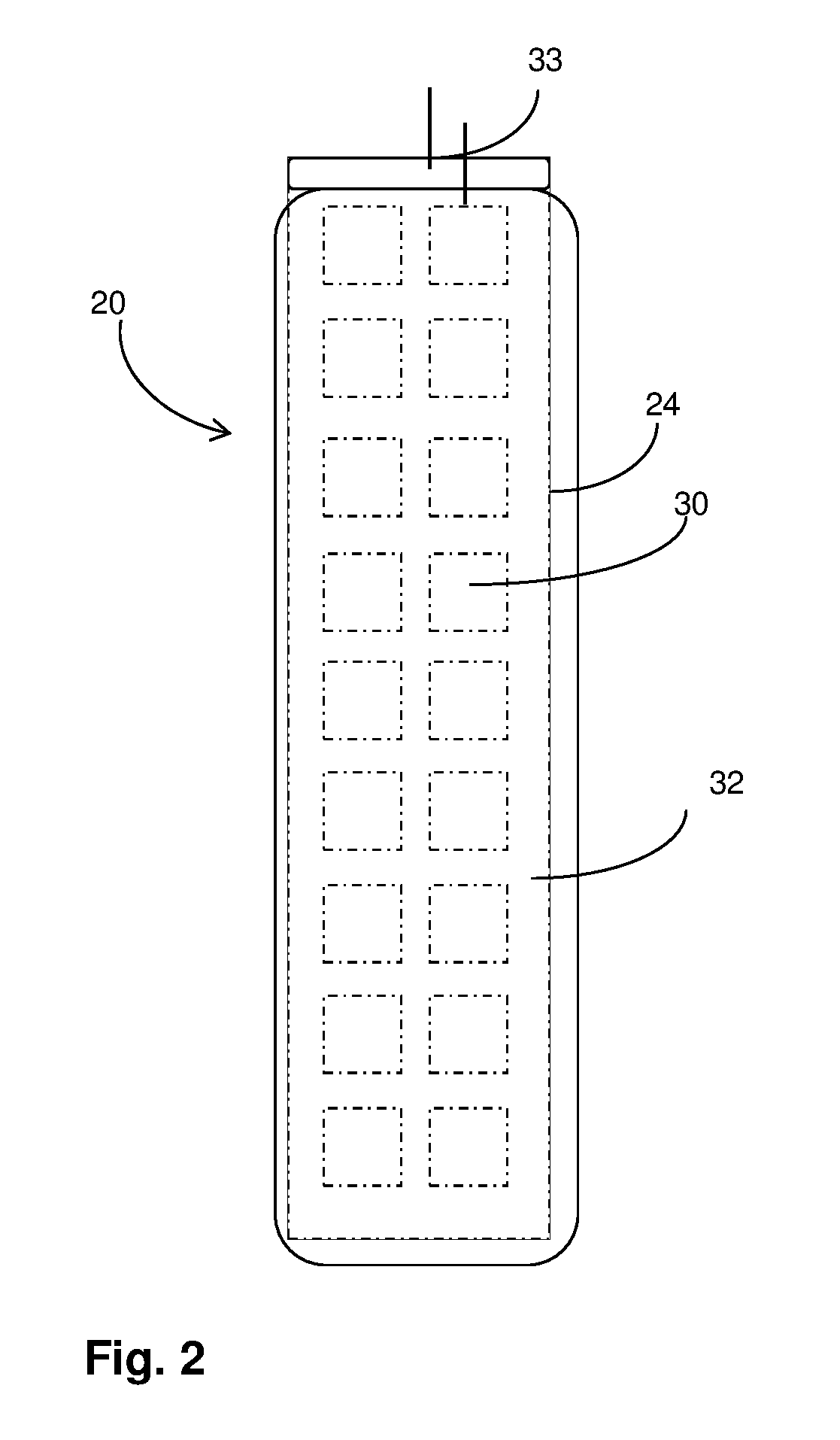Design for survivor locator light
- Summary
- Abstract
- Description
- Claims
- Application Information
AI Technical Summary
Benefits of technology
Problems solved by technology
Method used
Image
Examples
Embodiment Construction
[0046]The present invention relates to water-activated, deferred-action batteries and to a method for producing a cathode for such batteries.
[0047]More particularly the present invention relates to a deferred-action battery which is adapted to be activated by immersing it in water. Such batteries may be used for automatically powering emergency lamps and sirens on life-jackets and in case of flooding, for example.
[0048]Embodiments of the invention are directed to such survivor locator lights and their batteries.
[0049]There are standard humidity tests such as SAE International Aerospace Standard (AS) 4492 Survivor Locator Lights, December 1995 and reaffirmed Nov. 18, 2004, RTCA / DO-160C and RTCA / DO-160E that such batteries and lamps must pass.
[0050]While remaining fully compliant with International Aerospace Standards, there is an interest in prolonging the product life of survivor locator lights in high humidity storage conditions, in shortening the period for the light to come on fo...
PUM
 Login to View More
Login to View More Abstract
Description
Claims
Application Information
 Login to View More
Login to View More - Generate Ideas
- Intellectual Property
- Life Sciences
- Materials
- Tech Scout
- Unparalleled Data Quality
- Higher Quality Content
- 60% Fewer Hallucinations
Browse by: Latest US Patents, China's latest patents, Technical Efficacy Thesaurus, Application Domain, Technology Topic, Popular Technical Reports.
© 2025 PatSnap. All rights reserved.Legal|Privacy policy|Modern Slavery Act Transparency Statement|Sitemap|About US| Contact US: help@patsnap.com



